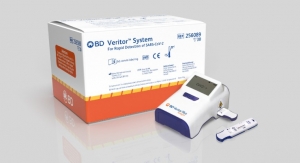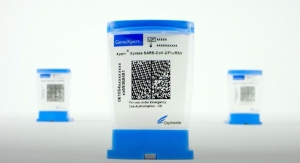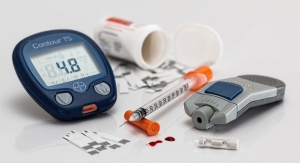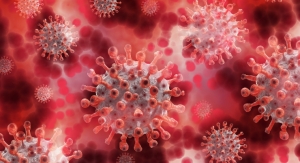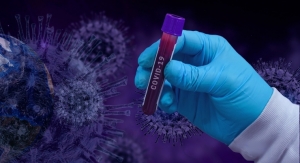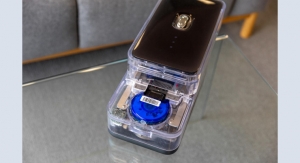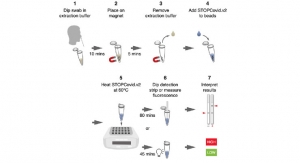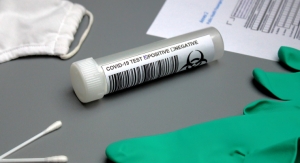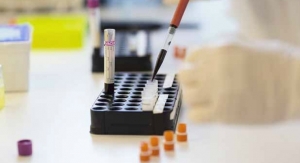Videos
Painless Paper Patch Glucose Level Test Uses Microneedles
Painless Paper Patch Glucose Level Test Uses Microneedles
Patch of needles connected to a paper sensor could diagnosing conditions such as prediabetes.
By Institute of Industrial Science, The University of Tokyo09.16.20
Patches seem to be all the rage these days. There are birth control patches, nicotine patches, and transdermal medicinal patches, just to name a few. Now, a team of researchers led by Beomjoon Kim at the Institute of Industrial Science, The University of Tokyo have developed a patch of needles connected to a paper sensor for diagnosing conditions such as prediabetes. Luckily, this patch doesn't multiply the pain and discomfort of a single hypodermic needle. In fact, these microneedles are painless and biodegradable.
Researchers have been trying to develop a practical way to use microneedles—tiny needles less than 1 mm in length—for routine do-it-yourself medical monitoring. Microneedles are so short that they stay within the skin and do not make contact with any neurons, meaning that they cause no pain. Rather than extracting blood, they draw up fluid in the skin that contains most of the important biomarkers that blood tests look for. Several types of microneedles exist, but until now, making a practical device that quickly analyzes the fluid has proved elusive. "We have overcome this problem by developing a way to combine porous microneedles with paper-based sensors," said Kim. "The result is low-cost, disposable, and does not require any additional instruments."
To make the patch, the researchers first made the microneedles by pouring a melted mixture of a biodegradable polymer and salt into the cone-shaped cavities of a micro-mold while applying heat. Then they flipped the mold and needles upside down and placed them on top of a piece of paper, this time applying high pressure from above. The high pressure forced the mixture into the pores of the paper, securing the attachment and allowing fluid drawn through the needles to pass effortlessly into the paper. After removal from the mold, the needles were cooled in a solution that sucked out all the salt, leaving behind thousands of holes, or pores, which are what the fluid flows through on its way to the paper. The salt concentration was a key factor they needed to optimize, testing several concentrations of salt to determine how porous the microneedles should be. To finish the patch, they used double-sided tape to attach a paper glucose sensor onto the paper base of the needle array.
The team tested the patch on an agarose gel in which glucose had been dissolved. Fluid from the gel flowed from the gel into the porous microneedles, and from there into the paper and the sensor layer. The glucose concentration was accurately recorded as color changes in the paper.
The patches are disposable, biodegradable, and using them does not require any medical expertise or training. They are also biocompatible, meaning that there is no problem if any remain in the skin when the patch is removed.
"Of course, prediabetes testing is just one application of the technology," said first author Hakjae Lee. "The paper-based sensor can vary depending on the biomarker you wish to monitor."
After this success, the next step will be to test the practicality of the device with human participants and to develop configurations for monitoring other substances, and in turn, determining the presence of other conditions.
Find more information about the study here!
Researchers have been trying to develop a practical way to use microneedles—tiny needles less than 1 mm in length—for routine do-it-yourself medical monitoring. Microneedles are so short that they stay within the skin and do not make contact with any neurons, meaning that they cause no pain. Rather than extracting blood, they draw up fluid in the skin that contains most of the important biomarkers that blood tests look for. Several types of microneedles exist, but until now, making a practical device that quickly analyzes the fluid has proved elusive. "We have overcome this problem by developing a way to combine porous microneedles with paper-based sensors," said Kim. "The result is low-cost, disposable, and does not require any additional instruments."
To make the patch, the researchers first made the microneedles by pouring a melted mixture of a biodegradable polymer and salt into the cone-shaped cavities of a micro-mold while applying heat. Then they flipped the mold and needles upside down and placed them on top of a piece of paper, this time applying high pressure from above. The high pressure forced the mixture into the pores of the paper, securing the attachment and allowing fluid drawn through the needles to pass effortlessly into the paper. After removal from the mold, the needles were cooled in a solution that sucked out all the salt, leaving behind thousands of holes, or pores, which are what the fluid flows through on its way to the paper. The salt concentration was a key factor they needed to optimize, testing several concentrations of salt to determine how porous the microneedles should be. To finish the patch, they used double-sided tape to attach a paper glucose sensor onto the paper base of the needle array.
The team tested the patch on an agarose gel in which glucose had been dissolved. Fluid from the gel flowed from the gel into the porous microneedles, and from there into the paper and the sensor layer. The glucose concentration was accurately recorded as color changes in the paper.
The patches are disposable, biodegradable, and using them does not require any medical expertise or training. They are also biocompatible, meaning that there is no problem if any remain in the skin when the patch is removed.
"Of course, prediabetes testing is just one application of the technology," said first author Hakjae Lee. "The paper-based sensor can vary depending on the biomarker you wish to monitor."
After this success, the next step will be to test the practicality of the device with human participants and to develop configurations for monitoring other substances, and in turn, determining the presence of other conditions.
Find more information about the study here!
Related Searches:


